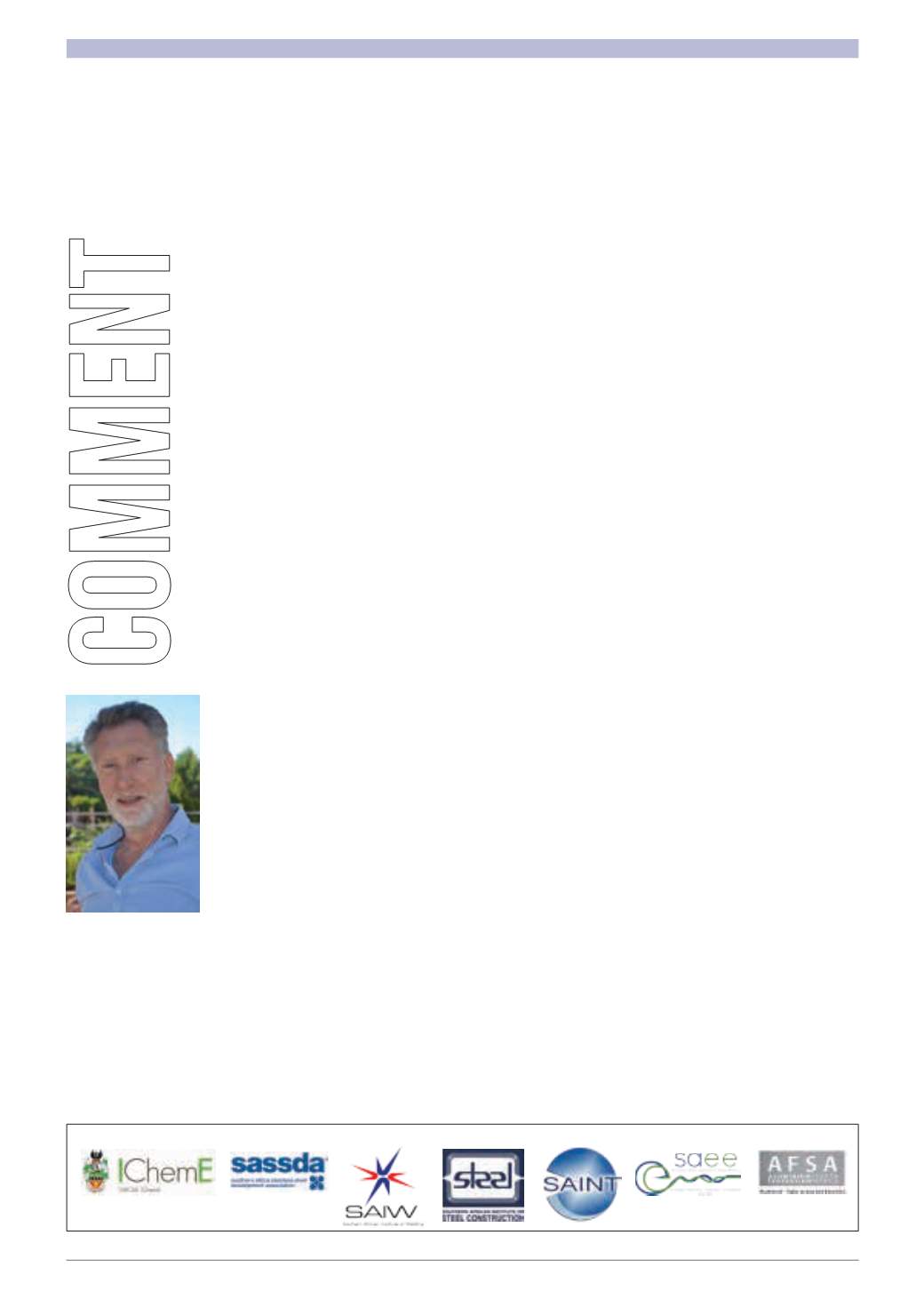

2
¦
MechChem Africa
•
June 2017
The energy mix:
the case for maximising renewables
A
n article by LeeAnne Graves published in
UAE’s
The National
reports that the Abu
Dhabi Water and Electricity Company has
signeda25-yearpowerpurchaseagreement
with Japan’s Marubeni and Jinko Solar for a 1.17 GW
PV solar power plant.
The plant’s weighted bid price was 2.42 US-cents
per kWh, just under R0.32/kWh at an exchange rate
of R13/$.
BloombergNewEnergy Finance (BNEF) estimates
that the current local (UAE) price of power from com-
bined cycle natural gas plants in the Middle East is at
least 3.0 US cents (R0.39/kWh), which, with adjust-
ments for inflation, puts the price of solar PV from
this plant at between 2.0% and 19% cheaper than
new-build gas plants.
The article also notes that solar PV panel prices
have fallen by 80% since 2009, according to the Abu
Dhabi-based International RenewableEnergyAgency.
IRP 2010 was published shortly after this date, so the
renewable energy and other energy mix recommen-
dations were based around much higher renewable
energy tariffs.
Despite the recent spat between Eskom’s ex-
acting CEO Koko and, well, everyone else, South
Africa’s renewables story is “truly inspirational”,
said Max Thabiso Edkins, from the World Bank’s
Connect4Climate programme, speaking earlier this
year at an Energy21 Exchange Hub meeting. One of
his main messages about renewable energy: it is no
longer as expensive as people think.
To date, the REIPPPP has facilitated nearly R200-
billion worth of investment across projects with a
combined capacity of over 6 000MW. The 26 delayed
projects procured under the fourth bid window and
its expansion are said to have a combined additional
investment value of R50-billion.
From a price perspective, average wind prices in
SouthAfricawent down fromR1.51/kWh in2011’s bid
Window1 to thecurrentR0.62/kWh. Average solarPV
priceswent down fromR3.65/kWh inbidWindow1 to
the current R0.62/kWh. For bidWindow 4, Koko was
prepared to signall 13 IPPbids atR0.62/kWhor below,
but not for the others, which are all belowR0.72/kWh:
a deal breaker?
It is hard to understand why there appears to
be so much resistance to expanding the renewable
programme and a contrasting determination to go
full steam ahead with the nuclear programme. On the
renewable side, Eskom says that we do not need the
additional capacity at the moment and signing the
bid Window 4 PPAs will “negatively affect the utility
financially”.
But a 9.6 GWnuclear build programme won’t?
One of the key strengths of the REIPPPP is that it
is based on long-term power-purchase agreements
(PPAs) and that the developer invests the capital re-
quired to build the plant. The utility buys the power,
which it immediately sells on to the consumer.
For renewable plant, therefore, Eskom does not
have to secure billions of rands of funding from lend-
ing agencieswith associatedGovernment guarantees.
Varying lending agency interest rates need not be
factored into the annual tariffs and all operational,
breakdown and maintenance costs are borne by the
IPP. The only commitment the state and/or the utility
makes is to purchase the power produced.
As a consumer of Joburg Electricity, I am already
payingR1.08/kWhon theminimum(Step1) tariff: this
beforenetworkchargesanddemandsidemanagement
additions. I understand that distribution also costs
money and that the utility cannot depend on PV or
wind generated power alone, but the IPP model and
the costs of the renewable energy generated by these
technologies can surely no longer be rejected because
they are too expensive.
Relating to energy issues thismonth, we report on:
Gas Africa 2017, which adopted the theme,
‘Southern
Africa is now proven to have huge natural gas deposits.
Howwill thismajor clean power source affect SouthAfrica
and the region’
; the gas pipeline being built in Tanzania
to give 2 000MWof new gas-fired electricity genera-
tion by 2018; Aurecon Hydro and REH’s small hydro
successes; and the increasing use of aluminium and
dry-type cast-resin transformers for renewable and
industrial plants.
Across Africa and in South Africa, we are blessed
with multiple energy options. We have coal, gas and
uraniumtofuelthermalpowerplant.Aroundourcoast-
line, we have abundance of wind energy resources;
inland, wehave someof thebest solar irradiation levels
intheworld;andnorthofourborders,hydro-resources
in abundance.
We should be looking to use them all. But for the
new IRP, as per the circulating draft, it has got to be
sensible tomaximiseour dependenceon renewables –
13.5%PV, 29%windand2.0%hydro fromInga is being
proposed; while using more gas (10%OCGT and 17%
CCGT is being suggested) to accommodate weather
fluctuations. Nuclear, along with coal, will remain
essential for base load generation, but shouldn’t we
be introducing these on a minimum possible basis?
q
MechChem Africa
is endorsed by:
Peter Middleton
















